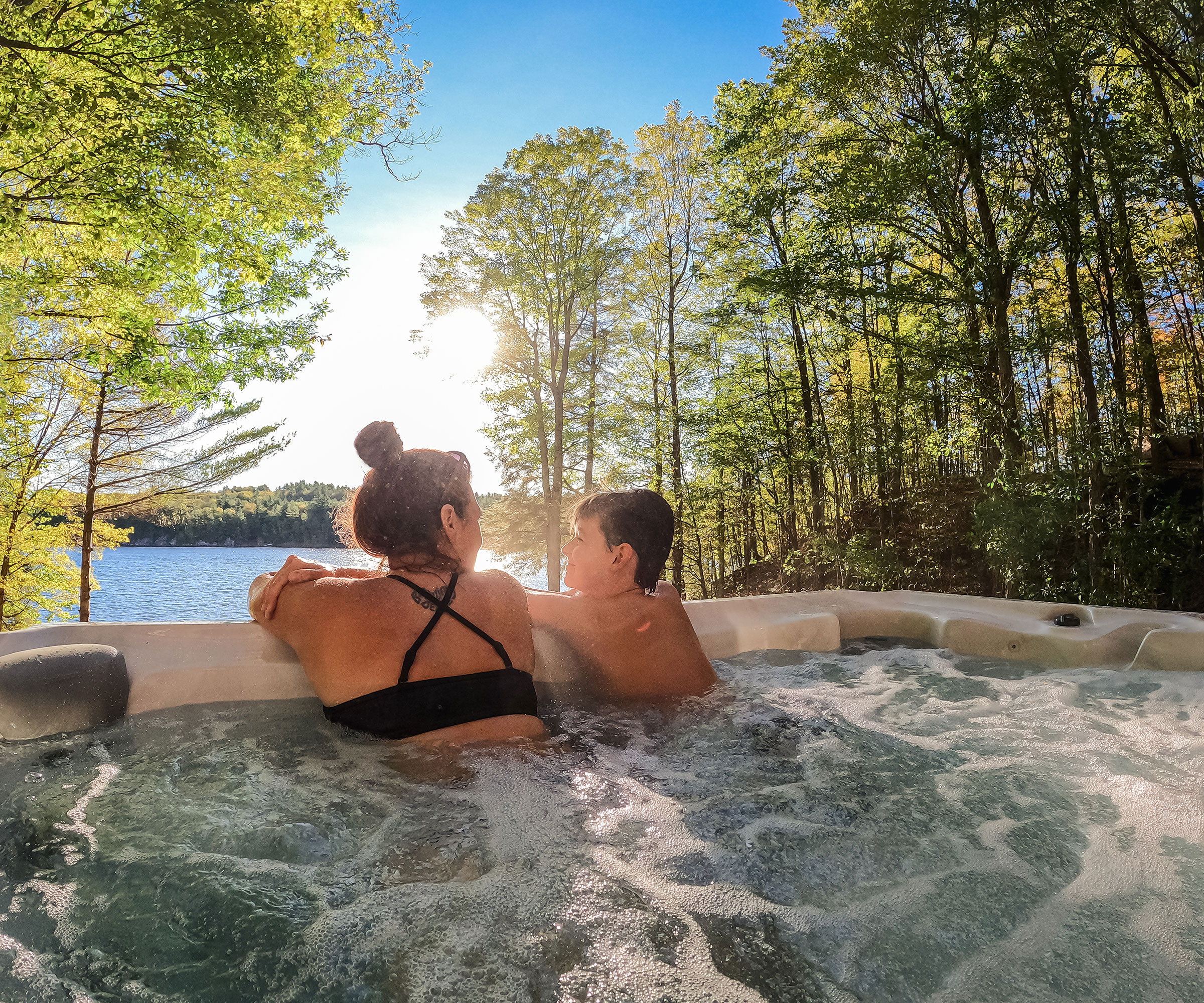What is the best hot tub temperature? Ensure the water’s right with our expert guide
Make your hot tub temperature comfortable and relaxing for all its users. These are the guidelines you need to know


A hot tub is the ideal place to relax and unwind after work, on the weekends, with friends or following a workout. But to create comfort, it needs to be at the right temperature.
Hot tub temperature isn’t just a matter of personal preference – although that’s definitely important. Water that’s too hot can create health issues especially for those who already have underlying conditions.
Here, we’ve put together the information you need on the best hot tub temperatures for different users, and for different times of the year so you can get the most out of yours.

Hot tub temperature guide
The therapeutic use of water has a history that dates back to ancient civilizations but today there’s no need to visit hot springs or bathing complexes since it’s easy to add a hot tub deck or patio to your backyard.
Once you first invest in one of these luxurious additions for your outdoor space or pool area, though, you’ll likely wonder what temperature you should set the water to. The answer is that there is no single temperature advised but a range, and we’ve put together all the details you need to decide which is the best hot tub temperature for you.
Ideal hot tub temperature
There is an ideal range for hot tub temperature rather than a single ideal. ‘Most hot tubs are kept at 101 to 102˚F,’ explains Karen Larson, co-founder of Soake Pools. ‘We like a little lower temperature so that our clients can stay in longer. We think 98 to 99˚F is perfect!’
As for a maximum? ‘It is recommended that maximum water temperature never exceed 104˚F,’ according to the Pool & Hot Tub Alliance (PHTA). What’s more, if you opt for that temperature, limit the time you spend in the hot tub.
Design expertise in your inbox – from inspiring decorating ideas and beautiful celebrity homes to practical gardening advice and shopping round-ups.
‘Don’t soak for more than 15 minutes at one sitting in 104˚F water,’ caution the PHTA experts. ‘If you wish to soak for a longer period of time in high temperatures, leave the spa or hot tub after 15 minutes, and then cool down and return for another brief stay.’
Best hot tub temperature for summer and winter
Wondering if the season of the year makes a difference to the temperature you should set for a hot tub?
‘Not necessarily,’ says Soake Pool’s Karen Larson. ‘This really depends on the usage. If a hot body of water is next to a cool one, hot tub temperatures might be a little higher (99 to 102˚F).
'In the summer, 95˚F can be nice on a cool night. These cooler temperatures are more suited to plunge pools, but can also be achieved in traditional hot tubs.’
Best hot tub temperature for kids
If kids are to use a hot tub, it’s essential to take safety precautions. Kids shouldn't see a hot tub as another addition to their backyard playground, and they should always be supervised, of course, but temperature also matters when it comes to younger family members.
‘Children should not be in super hot bodies of water,’ says Karen Larson. ‘Experts recommend cooler temperatures. The PHTA recommends that infants never go in hot tubs. They recommend children use them at temperatures between 95 and 98˚F but never for more than 15 minutes. They also recommend children do not fully immerse themselves in hot tub water.’

Best hot tub temperature for pregnant users
Pregnant women also need to be aware of the advice regarding hot tub temperature. MotherToBaby, a service of the non-profit Organization of Teratology Information Specialists, the nation’s leading authority of evidence-based information on the benefit or risk of medications and other exposures during pregnancy, advises that a body temperature of over 101˚F at this time can be of concern, especially if it lasts for a long period in very early pregnancy and therefore hot tub use should be limited. ‘This is because it can take only 10 to 20 minutes to raise body temperature to 102˚F,’ the experts say.
Always consult your doctor if you’re pregnant and thinking about using a hot tub.
How to maintain the best hot tub temperature
To maintain the best hot tub temperature, you’ll first need to establish what temperature suits all those who are going to use it regularly. Bear in mind the maximum of 104˚F, and ideally set it between 100 and 102˚F.
When the best temperature for users is established, try to stick to this range to avoid increasing running costs.
Be sure to have a good thermometer and follow the PHTA advice to check the temperature before anyone gets into the water and while using the hot tub, too.
FAQs
What are the risks if the hot tub temperature is too high?
Be aware of how water temperature affects the body. ‘High water temperatures can elevate your body temperature and the temperature of internal organs beyond safe limits,’ explains the PHTA.
A variety of symptoms might be experienced from using water at too high a temperature. ‘Risks include dizziness, racing heart beats, and headaches or extreme sleepiness,’ says Karen Larson.
Note the PHTA’s warning that pregnancy and some medical conditions such as diabetes and heart disease can make you especially sensitive to high temperatures, as can any serious illness, high or low blood pressure, and taking some prescription medicines, so always take advice from a doctor before using a hot tub if this applies to you, or you think it might.
What is a comfortable hot tub temperature?
A comfortable hot tub temperature is one that is at the lower end of the range. ‘In lower temperatures (eg, 98.6˚F – normal body temperature), most people can comfortably and safely soak for longer periods at one sitting,’ explains the Pool & Hot Tub Alliance.
Bear in mind that if the temperature is at the maximum recommended of 104˚F, you’ll need to limit time in the water to 15 minutes at a time.
Hot tubs can be a wonderful addition to your backyard or a pool patio to complete your outdoor spa setup, but do keep in mind the above safety precautions so it's safe and comfortable for everyone to use.
Ensuring your hot tub has a good-quality cover for when it's not in use is also key to maintaining the correct temperature. A cover will help the water to retain its heat, meaning you'll need to use less power to heat it up to the desired temperature each time you want to use it.

Sarah is a freelance journalist and editor. Previously executive editor of Ideal Home, she’s specialized in interiors, property and gardens for over 20 years, and covers interior design, house design, gardens, and cleaning and organizing a home for Homes & Gardens. She’s written for websites, including Houzz, Channel 4’s flagship website, 4Homes, and Future’s T3; national newspapers, including The Guardian; and magazines including Future’s Country Homes & Interiors, Homebuilding & Renovating, Period Living, and Style at Home, as well as House Beautiful, Good Homes, Grand Designs, Homes & Antiques, LandLove and The English Home among others. It’s no big surprise that she likes to put what she writes about into practice, and is a serial house renovator.